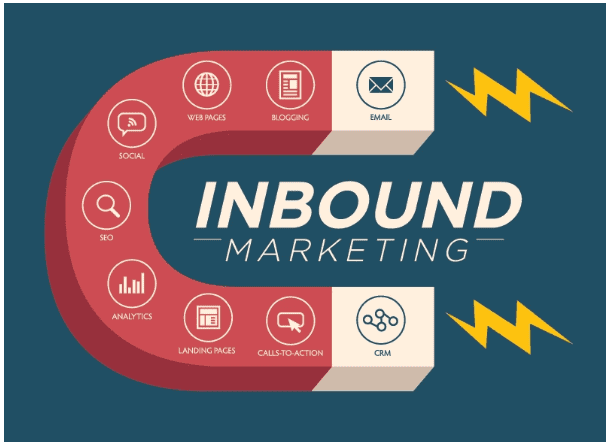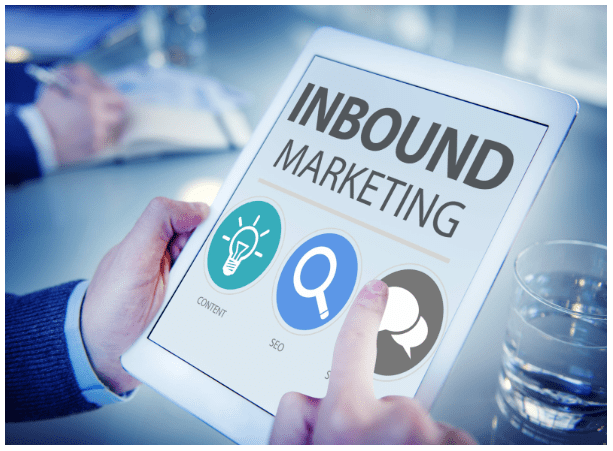Table of Contents
ToggleEmpower Your Sales with Top Inbound Marketing Tools
In the fast-paced digital landscape, leveraging practical inbound marketing tools is essential to empower your sales efforts. These tools attract potential customers and nurture them into loyal advocates. Let’s explore top inbound marketing tools that can take your sales to new heights.
- HubSpot: With its comprehensive suite of marketing automation tools, HubSpot is a game-changer. From creating personalized email campaigns to tracking lead interactions, HubSpot provides a centralized platform to manage your marketing efforts efficiently. Its analytics and reporting capabilities offer valuable insights into campaign performance, allowing you to refine your strategies for optimal results.
- Google Analytics: A free yet powerful tool, Google Analytics enables you to monitor website traffic, track conversions, and gain valuable demographic data. Google Analytics empowers you with data-driven decision-making, ensuring your sales efforts are targeted and impactful. By analyzing user behavior and identifying high-performing pages, you can optimize your content to attract and engage your target audience effectively.
- Hootsuite: Social media plays a vital role in inbound marketing, and Hootsuite simplifies its management. This robust social media management tool allows you to schedule posts, engage with your audience, and monitor brand mentions across multiple platforms. Maintaining an active social media presence can increase brand visibility, generate leads, and drive sales.
- SEMrush: To rank higher in search engine results and outrank competitors, you need an SEO powerhouse like SEMrush. This all-in-one SEO tool provides valuable insights into keyword research, backlink analysis, and on-page optimization. By leveraging SEMrush’s data-driven recommendations, you can optimize your website’s content and structure, ensuring it aligns with search engine algorithms and attracts organic traffic.
You can supercharge your sales efforts by harnessing the power of these top inbound marketing tools. Remember, utilizing the right tools saves time, increases productivity, and boosts revenue. Stay ahead of the competition by implementing these tools and embracing the ever-evolving world of digital marketing.
Understanding Inbound Marketing
Inbound marketing is a customer-centric approach that focuses on attracting, engaging, and delighting potential customers through valuable and relevant content. Unlike traditional outbound marketing tactics, which involve interrupting prospects with advertisements or cold calls, inbound marketing aims to create meaningful connections by providing value at every stage of the buyer’s journey. Here’s a breakdown of the key components and benefits of inbound marketing.
- Content Creation: At the core of inbound marketing is content creation. By producing high-quality blog posts, videos, ebooks, and other forms of content, businesses can address their target audience’s pain points and provide solutions. This approach establishes credibility and positions the brand as an industry thought leader, attracting potential customers actively seeking information.
- SEO and Keywords: Search engine optimization (SEO) is crucial for inbound marketing success. Businesses can increase their visibility in search engine results pages by conducting keyword research and optimizing content for relevant search terms. Appearing higher in organic search results allows companies to capture more qualified leads and generate more increased website traffic.
- Lead Generation: Inbound marketing focuses on capturing leads by offering valuable resources in exchange for contact information. By nurturing these leads with targeted email campaigns and personalized content, businesses can build trust and move prospects further down the sales funnel. This can be done through content upgrades, gated ebooks, or newsletter subscriptions.
- Social Media Engagement: Inbound marketing platforms play a significant role. By sharing valuable content and engaging with their target audience, businesses can foster brand awareness, encourage conversations, and drive traffic to their website. Social media also provides opportunities for customer feedback and relationship building.
- Marketing Automation: Inbound marketing leverages automation tools to streamline processes and effectively nurture leads. By automating email campaigns, lead scoring, and personalized content delivery; businesses can provide a tailored experience to their prospects and customers, improving conversion rates and customer satisfaction.
The benefits of inbound marketing are numerous. It creates a long-term and sustainable marketing strategy, generates brand visibility, and generates qualified leads. Inbound marketing builds relationships and provides value, resulting in customer loyalty and repeat business. Understanding the principles and implementing inbound marketing tactics can thrive in the digital age.

1.1 What is Inbound Marketing?
Inbound marketing is a customer-centric methodology focusing on attracting, engaging, and delighting potential customers through valuable and relevant content. It is a strategic approach that aims to attract customers toward a business or brand rather than push messages outward through traditional advertising.
Inbound marketing involves creating and distributing valuable content, such as blog posts, videos, social media updates, ebooks, and more, which address the pain points and interests of the target audience. The goal is to establish credibility and build trust with potential customers by providing them with helpful and informative content.
This methodology revolves around understanding the buyer’s journey and creating content that caters to each stage, from awareness to consideration and decision-making. By optimizing content for search engines and utilizing techniques like keyword research, businesses can increase their visibility in search results and attract qualified organic traffic.
Inbound marketing also includes strategies for lead generation, nurturing leads through personalized email campaigns, and utilizing marketing automation tools to deliver relevant content to the right audience at the right time. The fundamental principles of inbound marketing are based on providing value, creating meaningful connections, and building long-term customer relationships.
By adopting this approach, businesses can attract and retain customers genuinely interested in their products or services, resulting in higher customer satisfaction, increased brand loyalty, and, ultimately, business growth.
1.2 Key Principles of Inbound Marketing
Critical Principles of Inbound Marketing Inbound marketing is guided by several fundamental principles that shape its methodology and approach. These principles revolve around providing value, building relationships, and creating meaningful connections with potential customers. Here are the fundamental tenets of inbound marketing:
- Customer-Centric Approach: Inbound marketing puts the customer at the center of its strategy. It focuses on understanding the target audience’s needs, pain points, and interests. By creating content that addresses these needs and provides value, businesses can attract and engage potential customers more meaningfully.
- Content Creation and Distribution: Content is the foundation of inbound marketing. Creating high-quality and valuable content, such as blog posts, videos, ebooks, and social media updates, is essential for attracting and engaging the target audience. This content is distributed through various channels to reach and resonate with the right people.
- Personalization and Targeting: Inbound marketing emphasizes personalization and targeting. Personalization helps create a more relevant and engaging experience for potential customers. By understanding the buyer’s journey and segmenting the audience, businesses can deliver tailored content that speaks directly to different customer segments’ specific needs and interests.
- Relationship Building: Inbound marketing is focused on building long-term relationships with customers. It involves nurturing leads through targeted email campaigns, providing lasting value and support, and engaging in two-way conversations. By building trust and credibility, businesses can foster loyalty and advocacy among their customer base.
- Data-Driven Decision Making: Inbound marketing uses data and analytics to inform strategies and measure results. By tracking and analyzing metrics like website traffic, conversion rates, and customer behavior, businesses can make data-driven decisions to optimize their marketing efforts and improve performance over time.
- Continuous Improvement: Inbound marketing is an iterative process that requires continuous improvement. Adapting and evolving based on customer feedback and market trends is essential. By monitoring results, experimenting with different approaches, and learning from insights gained, businesses can refine their strategies to achieve better outcomes.
By adhering to these fundamental principles, businesses can create a customer-centric marketing approach that attracts, engages, and delights potential customers. Inbound marketing fosters meaningful connections, builds trust, and ultimately drives business growth in the long run.

1.3 The Role of Inbound Marketing in Sales
Inbound marketing plays a crucial role in the sales process by attracting, nurturing, and converting leads into customers. It aligns marketing efforts with the buyer’s journey, empowering sales teams with qualified leads and providing valuable insights. Here’s a breakdown of the critical ways inbound marketing supports the sales process:
- Lead Generation: Inbound marketing focuses on attracting potential customers actively seeking information or solutions. By creating and promoting valuable content, businesses can capture leads through various channels like website forms, content downloads, and social media engagement. These leads are more likely to be interested and engaged, providing sales teams a higher chance of conversion.
- Lead Nurturing: Inbound marketing enables businesses to nurture leads effectively. By providing valuable and relevant content through email campaigns, personalized recommendations, and targeted interactions, companies can keep tips engaged and move them further down the sales funnel. This ongoing nurturing builds trust and credibility, increasing the likelihood of a successful sales conversion.
- Qualification and Sales Enablement: Inbound marketing helps identify and qualify leads before passing them on to the sales team. By tracking lead interactions, engagement levels, and conversion metrics, marketing teams can provide sales teams with valuable insights into a lead’s behavior and interests. This information equips sales professionals with a deeper understanding of the lead’s needs, enabling them to personalize their sales approach and increase the chances of closing a deal.
- Content for Sales Enablement: Inbound marketing produces a wealth of content that the sales team can use to educate and engage prospects. Content such as case studies, white papers, product demos, and customer testimonials provide valuable resources that can support the sales process. Sales professionals can leverage this content to address specific customer pain points, overcome objections, and build trust with potential customers.
- Customer Retention and Advocacy: Inbound marketing extends beyond the initial sale. Businesses can turn customers into loyal advocates by consistently providing value and fostering positive customer experiences. Satisfied customers are more likely to give referrals, leave positive reviews, and become repeat buyers, contributing to the overall growth and success of the business.
Inbound marketing plays a pivotal role in sales by generating qualified leads, nurturing them through personalized interactions, and providing valuable insights to sales teams. It enables sales professionals to engage with leaders at the right time, with the right message, ultimately increasing conversion rates and driving revenue growth. By aligning marketing and sales efforts, businesses can create a seamless customer journey and achieve sustainable sales success.
Top Inbound Marketing Tools for Sales Boost
To supercharge your sales efforts through inbound marketing, utilizing the right tools can make a significant difference. Here are some top inbound marketing tools that can help boost your sales:
- CRM Software: Customer Relationship Management (CRM) software is essential for effectively managing and organizing your sales pipeline. CRM software helps streamline your sales processes, enabling you to prioritize leads, track interactions, and close deals more efficiently. Tools like Salesforce, HubSpot CRM, or Zoho CRM provide features such as lead tracking, contact management, deal tracking, and analytics.
- Marketing Automation Platforms: Marketing automation platforms like HubSpot, Marketo, or Pardot allow you to automate repetitive marketing tasks, nurture leads, and deliver personalized content. These tools enable you to create automated email campaigns, segment your audience, track customer behavior, and provide targeted content based on their interests. By automating these processes, you can engage leads at scale, move them through the sales funnel, and ultimately increase conversions.
- Email Marketing Tools: Email marketing remains a powerful tool for nurturing leads and driving sales. Tools like Mailchimp, Campaign Monitor, or Sendinblue provide features for designing visually appealing emails, managing subscriber lists, and tracking email performance. With these tools, you can send personalized and targeted emails and automated email sequences and measure the effectiveness of your email campaigns.
- Social Media Management Platforms: Social media plays a significant role in inbound marketing. Tools like Hootsuite, Sprout Social, or Buffer allow you to manage and schedule social media posts across multiple platforms, monitor brand mentions, engage with your audience, and measure social media performance. These platforms help you maintain an active social media presence, build brand awareness, and drive traffic to your website.
- Content Creation and Management Tools: High-quality content is critical to inbound marketing success. Tools like Grammarly, SEMrush SEMrush, and Google Docs help create content, proofread, and optimize. These tools ensure your content is well-written, optimized for search engines, and aligned with your overall inbound marketing strategy.
- Analytics and Reporting Tools: Data-driven decisions are vital in the inbound market. You can measure the effectiveness of your inbound marketing efforts, identify areas for improvement, and make data-driven decisions to optimize your sales strategies. Ing. Tools like Google Analytics, Moz, and Kissmetrics provide analytics and reporting features. They offer insights into website traffic, visitor behavior, and conversion rates.
By leveraging these top inbound marketing tools, you can enhance your sales efforts, streamline processes, and achieve better results. Each instrument plays a specific role in attracting, engaging, and converting leads, empowering you to drive sales growth through effective inbound marketing strategies.

2.1 Content Creation and Management Tools
Creating and managing high-quality content is crucial for successful inbound marketing. Here are some top content creation and management tools that can help you streamline your content production process and ensure its effectiveness:
- Grammarly: Grammarly is a widely used writing tool that helps you improve the quality of your content by checking grammar, spelling, punctuation, and writing style. It offers real-time suggestions and corrections as you write, ensuring your content is error-free and easy to read.
- SEMrush: SEMrush is a comprehensive SEO tool that assists in keyword research, competitive analysis, and content optimization. It helps you identify relevant keywords, analyze their search volume and competition, and optimize your content. With SEMrush, you can ensure your content is well-optimized for search engines and has a higher chance of ranking well in search results.
- Google Docs: Google Docs is a famous cloud-based document creation and collaboration tool. With Google Docs, you can easily create, edit, and format your content and seamlessly share it with your team or clients. It allows multiple team members to work on the same document simultaneously, facilitating real-time collaboration and version control.
- WordPress: WordPress is a widely used content management system (CMS) that simplifies creating and managing your website’s content. It offers a user-friendly interface, a wide range of themes and plugins, and built-in SEO features. With WordPress, you can publish and update content easily, optimize it for search engines, and enhance the overall user experience.
- Canva: Canva is a versatile graphic design tool that helps you create visually appealing and engaging content. It offers a wide range of templates, fonts, and images to design professional-looking graphics for your blog posts, social media posts, infographics, and more. Canva’s drag-and-drop interface makes it easy to create stunning visuals without requiring extensive design skills.
- CoSchedule: CoSchedule is a content marketing calendar and workflow management tool. It lets you plan, organize, and schedule your content in a centralized calendar, ensuring a consistent publishing schedule. CoSchedule also offers collaboration features, allowing you to assign tasks, track progress, and streamline the content creation process within your team.
These content creation and management tools can significantly enhance your productivity, improve the quality of your content, and streamline your overall content marketing efforts. By leveraging these tools, you can create compelling and optimized content that effectively attracts and engages your target audience.
2.2 Customer Relationship Management (CRM) Tools
CRM tools are essential for managing customer relationships, organizing sales processes, and maximizing the effectiveness of your inbound marketing efforts. Here are some top CRM tools that can help you streamline your sales and customer management activities:
- Salesforce: Salesforce is one of the leading CRM platforms widely used by businesses of all sizes. It offers a comprehensive suite of tools and features to manage customer relationships, track sales activities, and automate marketing processes. Salesforce provides functionalities like lead management, opportunity tracking, email integration, and customizable reporting, empowering sales teams to manage their pipeline and drive revenue growth effectively.
- HubSpot CRM: HubSpot CRM is a user-friendly and free CRM solution that integrates seamlessly with HubSpot’s marketing and sales tools. It lets you track and manage your contacts, organize your sales pipeline, and monitor customer interactions. HubSpot CRM also provides features like email tracking, task management, and reporting, making it a popular choice for businesses adopting inbound marketing strategies.
- Zoho CRM: Zoho CRM is a cloud-based platform offering a range of tools to streamline sales and customer management processes. It provides features in lead generation, contact management, deal tracking, and workflow automation. Zoho CRM also integrates with other Zoho applications, such as Zoho Campaigns for email marketing and Zoho Desk for customer support, providing a comprehensive suite for end-to-end customer management.
- Pipedrive: Pipedrive is a sales-focused CRM tool emphasizing pipeline management and deal tracking. It offers a visual interface that allows you to easily track and manage your sales opportunities, set up customized pipelines, and track progress at each stage. Pipedrive provides email integration, goal setting, and sales reporting features, empowering sales teams to stay organized and focused on closing deals.
- Microsoft Dynamics 365: Microsoft Dynamics 365 is a robust CRM platform that integrates with other Microsoft applications like Outlook, Excel, and SharePoint. It provides various CRM functionalities, including lead management, contact tracking, sales forecasting, and customer service management. Its seamless integration with other Microsoft tools offers a unified sales, marketing, and customer support platform. These CRM tools provide features to streamline customer management, track sales activities, and enhance collaboration within sales teams.
By implementing a CRM solution, businesses can centralize their customer data, improve sales processes, and optimize their inbound marketing efforts to deliver personalized and effective interactions with leads and customers.

2.3 Marketing Automation Tools
Marketing automation tools are crucial in streamlining and automating various marketing processes, enabling businesses to implement their inbound marketing strategies effectively. Here are some top marketing automation tools that can help boost your marketing efforts:
- HubSpot: HubSpot offers a comprehensive marketing automation platform that integrates with their CRM and sales tools. It provides features for lead capture, lead nurturing, email marketing, social media scheduling, and analytics. HubSpot’s automation workflows allow you to create personalized customer journeys, automate repetitive tasks, and deliver targeted content based on user behavior and interactions.
- Marketo: Marketo is a robust marketing automation platform that caters to enterprise-level businesses. It offers lead management, email marketing, landing page creation, campaign tracking, and lead scoring features. Marketo’s advanced automation capabilities enable companies to create sophisticated nurturing campaigns, track customer engagement, and measure marketing ROI.
- Pardot: Pardot is a marketing automation tool by Salesforce designed to integrate seamlessly with their CRM platform. It provides lead generation, email marketing, leads nurturing, and ROI reporting features. Pardot’s automation features include drip campaigns, dynamic content, and lead scoring, helping businesses streamline their marketing efforts and drive personalized engagement.
- ActiveCampaign: ActiveCampaign is a popular marketing automation platform that offers a wide range of features, including email marketing, automation workflows, CRM integration, lead scoring, and behavioral tracking. It provides a visual automation builder that allows you to create complex workflows and trigger actions based on user behavior or specific criteria.
- Mailchimp: While primarily known as an email marketing tool, Mailchimp also offers marketing automation features. It allows businesses to create automated email campaigns, segment their audience, and trigger personalized emails based on customer behavior. Mailchimp’s automation workflows are easy to set up and can help businesses engage with their audience at the right time with relevant content.
- GetResponse: GetResponse is an all-in-one marketing platform that includes email marketing, landing page creation, marketing automation, and webinar hosting. Its automation features allow businesses to create workflows, segment contacts, and send targeted messages based on user actions. GetResponse also provides analytics and reporting to track campaign performance and optimize marketing strategies.
These marketing automation tools can help businesses streamline their marketing processes, automate repetitive tasks, and deliver personalized and targeted content to their audience. By leveraging these tools, companies can enhance their inbound marketing efforts, nurture leads effectively, and drive customer engagement and conversions.
2.4 Analytics and Reporting Tools
Analytics and reporting tools are essential for measuring the effectiveness of your inbound marketing efforts, gaining valuable insights, and making data-driven decisions. Here are some full analytics and reporting tools that can help you track and analyze your marketing performance:
- Google Analytics: Google Analytics is a powerful and widely used web analytics tool. It provides comprehensive data on website traffic, user behavior, conversion rates, and more. With Google Analytics, you can track the performance of your inbound marketing campaigns, understand visitor demographics, identify top-performing content, and measure the impact of your marketing efforts.
- Adobe Analytics: Adobe Analytics is an enterprise-level analytics solution that offers advanced features for tracking and analyzing customer data. It provides real-time insights into customer behavior, multichannel analytics, and audience segmentation. Adobe Analytics enables businesses to deeply understand customers’ journeys, optimize marketing strategies, and drive personalized experiences.
- Hotjar: Hotjar is a user behavior analytics and feedback tool that helps you understand how users interact with your website. Hotjar allows you to visualize user behavior, identify areas of improvement, and optimize your website’s user experience to enhance conversions. It offers features like heat maps, session recordings, and feedback polls.
- SEMrush: While primarily known as an SEO tool, SEMrush also provides valuable analytics and reporting features. It offers insights into organic and paid search traffic, competitor analysis, keyword performance, and more. SEMrush lets you track your inbound marketing campaigns’ effectiveness, identify improvement opportunities, and make data-driven decisions to optimize your strategies.
- Moz: Moz is another popular SEO tool with analytics and reporting capabilities. Moz’s analytics features help you monitor the performance of your website, track SEO metrics, and identify areas for optimization to improve your inbound marketing results. It provides data on keyword rankings, site audits, backlink analysis, and more.
- Tableau: Tableau is a data visualization and reporting tool that allows you to create interactive and visually appealing dashboards. Tableau enables you to analyze and present your marketing data visually compellingly, making it easier to identify trends, patterns, and actionable insights. It integrates with various data sources, including CRM systems, marketing automation tools, and web analytics platforms.
These analytics and reporting tools empower businesses to track and measure the effectiveness of their inbound marketing efforts, identify areas for improvement, and make informed decisions. By leveraging these tools, you can optimize your strategies, enhance your marketing performance, and achieve your business goals.

Final Thoughts
Inbound marketing is a powerful strategy for attracting, engaging, and delighting potential customers through valuable content and personalized experiences. By understanding the fundamental principles of inbound marketing and utilizing the right tools, businesses can drive sales growth, build lasting customer relationships, and achieve long-term success.
Content creation and management tools provide the necessary support for creating high-quality, optimized content that resonates with your target audience. These tools help streamline content production, ensure accuracy and readability, and optimize your content for search engines.
CRM tools are crucial in managing customer relationships, organizing sales processes, and aligning marketing and sales efforts. These tools enable businesses to track leads, nurture relationships, and provide a personalized sales experience based on customer data and interactions.
Marketing automation tools are instrumental in automating repetitive marketing tasks, nurturing leads, and delivering personalized content at scale. These tools help businesses streamline their marketing efforts, save time, and improve efficiency, ultimately driving higher conversions and revenue.
Analytics and reporting tools provide valuable insights into marketing performance, customer behavior, and campaign effectiveness. By tracking and analyzing relevant data, businesses can measure the impact of their inbound marketing efforts, identify areas for improvement, and make data-driven decisions to optimize their strategies.
Incorporating these tools into your inbound marketing strategy can help you create a seamless and efficient process, maximize the effectiveness of your marketing efforts, and achieve tangible business results.
Remember, inbound marketing is an ongoing process that requires continuous improvement, adaptation to customer needs, and staying up-to-date with industry trends. By staying committed to providing value, building relationships, and leveraging the right tools, businesses can thrive in the digital age and achieve long-term success in a customer-centric landscape.
- Success vs. Significance: Understanding the Difference and Achieving Both - October 1, 2023
- 8 Steps to SaaS Success: From Idea to Business - September 30, 2023
- The Importance of Testing in SaaS: Ensure Quality and Success - September 29, 2023